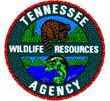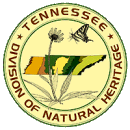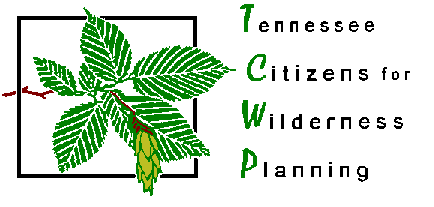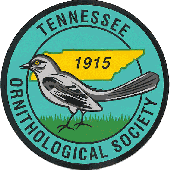|
Science and Technology on the Oak Ridge Reservation Environmental Research Web sites at Oak Ridge National Laboratory and other federally supported institutions tell about a few of the ongoing and completed research projects and programs that have benefited from the unique resources available on the ORR. Also, the ORNL land use plan highlights environmental research on the ORR. The National Environmental Research Park (NERP) on the ORR includes most of the environmental research sites. The NERP newsletter archive has articles about some NERP research activities. Walker
Branch Watershed Research Program -- The Walker Branch Watershed is
one of only a few sites in the world characterized by long-term, intensive
environmental studies. Since 1967, studies on Walker Branch Watershed have
contributed to a more complete understanding of how forest watersheds function
and have provided insights into the solution of energy-related problems
associated with air pollution, contaminant transport, and forest nutrient
dynamics. Walker Branch is identified by the NASA Earth Observing System as an EOS Land Validation Core Site -- a location with extensive long-term measurements and the necessary infrastructure to support new in situ measurements, so that it is a good place for scientists to validate satellite remote sensing data against conditions on the ground.
Oak
Ridge National Laboratory Hydrology Field Test Sites -- Field
sites with intense monitoring networks are being used for basic research
into the subsurface hydrology of heterogeneous, fractured rock and soil,
and to test new tracer test techniques and monitoring techniques for fractured
porous media.
The Oak Ridge Reservation
houses the Field
Research Center (FRC) of the Natural and Accelerated Bioremediation Research
(NABIR) program. This is a site for field research to support improved understanding
of fundamental biogeochemical processes related to in situ bioremediation
of contaminated soil and groundwater. More information about the FRC.
ORNL researchers
and collaborators from other institutions are conducting field experiments
on the ORR that address fundamental questions about the effects of global
environmental change on ecosystems
Practical methods
for airborne collection of land data have been tested and demonstrated
on the ORR, including airborne geophysical surveys and use of radio-controlled
airplanes to extend and supplement conventional aerial photography.
Applied
Ecological Modeling on the Oak Ridge Reservation -- Ecological models developed and tested
on the ORR can be used to help Federal land managers devise optimal land
management strategies for military bases and other Federal lands.
ORR researchers seek to understand Microstegium and other exotic plant pests -- ORNL and University of Tennessee ecologists are using the ORR as a natural laboratory for research aimed at better understanding the phenomenon of invasive species.
Field observations
on the ORR have played a vital role in fundamental research on atmospheric
transport processes directed by the NOAA
Atmospheric Turbulence and Diffusion Division. This organization operates
a permanent research station on the Walker Branch Watershed. There
are websites about a few ATDD projects that have used ORR data:
Long-term monitoring
of biota in Oak Ridge Reservation streams has led to broadly applicable
findings about the potential for biological
indicators (bioindicators) to monitor the severity of water pollution
by assessing the effects of environmental stressors on the health of aquatic
organisms. |
|
Conservation Value of the Oak Ridge Reservation Articles "The Oak Ridge Reservation: A Nationally Valuable Natural Resource" -- Article from the ORNL Review discusses regionally unique diversity of plant and animal species found on the ORR. "Battlefield - East Tennessee" -- Metropulse article tells about the accelerating loss of ecological resources in the region and efforts to stem the tide, including the significance of protecting public lands such as the DOE Oak Ridge Reservation. "Bald eagle in Oak Ridge" - Letter to the editor of The Oak Ridger describes the amazing variety of bird life observed on an early morning bird walk at Freels Bend. Published May 16, 2000. State
seeks new agreements to protect reservation's natural areas - January
22, 2001 article in The Oak Ridger discusses the views of the Tennessee
Department of Conservation and Environment regarding the value of natural
areas and sensitive species on the ORR, and their protection.
Species Lists The website Available Species Lists for the Oak Ridge Reservation includes the following:
Sensitive
Wildlife Species on the Oak Ridge Reservation - Species listed by the
U.S. Fish and Wildlife Service or the Tennessee Department of Conservation
and Environment as endangered, threatened, species of concern, or species
in need of management. Birds sighted at Freels Bend - 86 species listed. Threatened
and Endangered Plants on the Oak Ridge Reservation - More than 20 plant species known to occur on the ORR, are listed by the state of Tennessee as threatened or endangered, including pink lady's-slipper and Canada lily. Oak Ridge Reservation fish species |
|
Value of the Oak Ridge Reservation for the Local Economy The National League of Cities study on "Tourism and Entertainment as a Local Economic Development Strategy: A Survey of City Halls," identified natural areas (such as the ORR) as an important contributor to the quality of life and the economic vitality of cities and towns nationwide. Read the Oak Ridger news story about this study. |
|
Public Health and Safety Value of the Oak Ridge Reservation |
|
Educational Value of the Oak Ridge Reservation Faculty and students of the University of Tennessee are frequent visitors to the Oak Ridge Reservation for class field trips, demonstrations, and research activities. This Knoxville News-Sentinel news story highlights research work at Freels Bend by UT graduate student Greg Crutsinger: Goldenrod study earns UT grad student fellowship Many of ORNL's education programs for K-12 students, teachers, and university students take advantage of the outdoor resources of the ORR. |
|
Recreational Value of the Oak Ridge Reservation Oak Ridge National Environmental Research Park Driving Tour - The Museum of Science and Energy formerly promoted a self=guided tour of the public roads of the ORR, where visitors could see locations of natural, historic, and research interest. Unfortunately, some of those roads are closed to through traffic following the events of September 11, 2001, and the online tour brochure is no longer available. Public hunting on the Oak Ridge Reservation -- The Tennessee Wildlife Resources Agency (TWRA), in cooperation with DOE, conducts public hunts for deer and wild turkey on the ORR. On-line information includes hunting area maps and statistics from past hunts. Several gravel roads on the Oak Ridge Reservation have outstanding recreational potential as greenways -- components of the Oak Ridge Greenways system. The Gallaher Bend Greenway is the first public greenway on the ORR, allowing hikers and bicyclists to tour the wooded Gallaher Bend peninsula that lies beyond Clark Center Recreation Park -- part of the Three Bend Scenic and Wildlife Area. A second public greenway, the North Boundary Greenway, opened in 1999. It is near residential areas in West Oak Ridge. Not only is it popular with fitness walkers, birdwatchers, and recreational cyclists, but it offers a pleasurable bicycle commuting route to the Heritage Center and Horizon Center sites at the East Tennessee Technology Park. Public
tours of ORNL and Y-12 (May through September) and nature walks on the ORR are coordinated
by the American Museum of
Science and Energy. Check the museum's calendar
of events or phone the museum (865-576-3200) to find out about current
opportunities.
|
|
Historical Significance of the Oak Ridge Reservation Picturesque Freels Cabin was home to a farm family for several generations before the government took over the land in 1943. Today it is used for education programs. |










